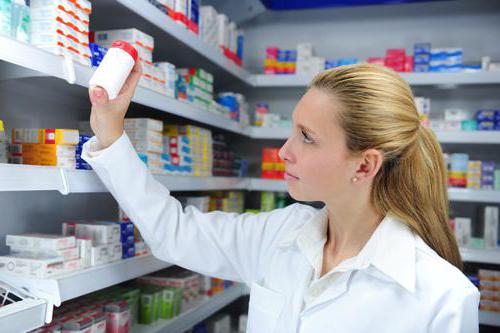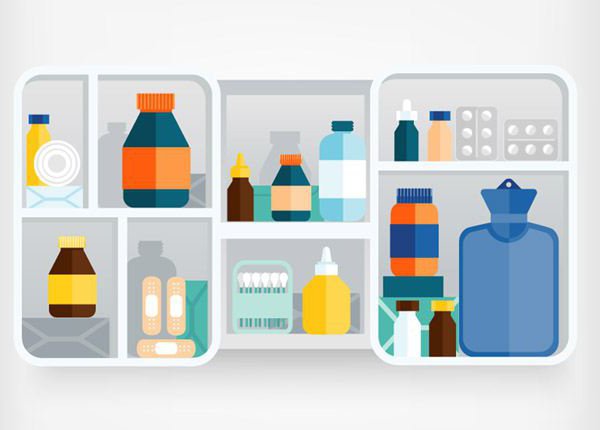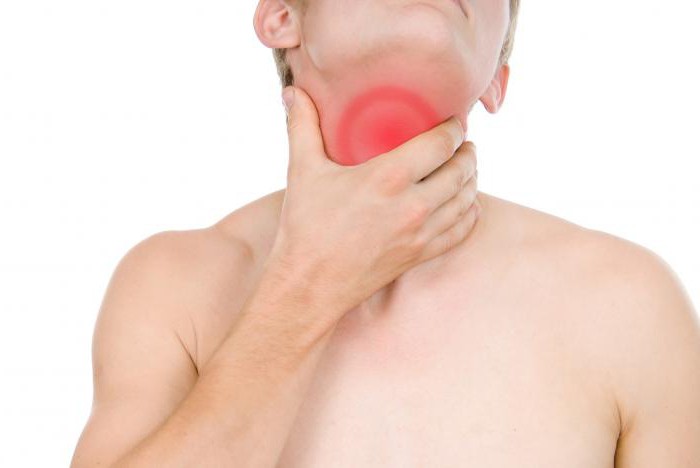Caring for one’s health increases the population’s demand for medicines of various groups. The pharmaceutical industry tends to grow and increase annual sales by 4-5 percent. Over-the-counter dispensing of medicines allows consumers to make independent selection of medicines without prior consultation with specialists.

The concept of medicines
Medicines are substances of natural and synthetic origin, which are used to restore damaged and lost body functions, treat and prevent diseases. These drugs also include means to prevent unwanted pregnancy (contraceptives).
All medicines can have both therapeutic and side effects. This is expressed by the following conditions:
- drug dependence;
- drug allergy;
- intoxication;
- side effect.
The result of the influence of drugs on the body directly depends on their ability to maintain a certain concentration in organs and tissues, which is due to absorption, distribution, chemical transformation and excretion.
Drug Classification
All existing medicines are grouped by the following indicators:
- Medicinal use. For example, drugs for the treatment of neoplasms, high blood pressure, antimicrobial.
- Pharmachologic effect. For example, vasodilators dilate blood vessels, antispasmodics eliminate the presence of spasm of tissues and blood vessels, analgesics relieve pain.
- The chemical structure. Preparations based on the same active substance are combined according to this principle. For example, salicylates include Salicylamide, acetylsalicylic acid, Methyl salicylate.
- The nosological principle. The drugs are combined on the basis of the necessary funds for the treatment of a specific disease (drugs for the treatment of angina pectoris, drugs for the fight against bronchial asthma).
Classification by M.D. Mashkovsky
The academician proposed to divide medications into groups (see table).
| Drug group | Subgroups | Drug Examples |
| Acting on the central nervous system | Psychotropic, anesthetic drugs, anticonvulsants, analgesics, antipyretics, antitussives, drugs for the treatment of parkinsonism | Gidazepam, Methoxifluran, Phenytoin, Analgin, Codeine, Gludantan |
| Effective on innervation | Anticholinergics, ganglion blockers, curariform. | Atropine, Scopolamine, Benzohexonium, Pentamine, Arduan, Pavulon |
| Sensitive receptors, including mucous membranes and skin | Local anesthetics, adsorbents, enveloping agents, laxatives, emetics, expectorants | Lidocaine, Enterosgel, Maalox, Bisacodyl, Ipecac Syrup, Lazolvan |
| Affecting the work of the cardiovascular system | Cardiac glycosides, hypotensive, antiarrhythmic, antianginal, cardioprotectors | Digoxin, Magnesium Sulfate, Novocainamide, Nitroglycerin, Verapamil |
| Aimed at enhancing excretory function of the kidneys | Saluretics, potassium-sparing agents, osmotic | "Furosemide", "Veroshpiron", "Beckoning" |
| Choleretic | Choleretics, cholekinetics, cholespasmolytics, drugs that reduce the lithogenicity of bile | “Allohol”, “No-Shpa”, “Platifillin”, “Ursofalk” |
| Affecting the uterine muscles | Tocolitics, stimulants | Fenoterol, Oxytocin |
| Affecting metabolic processes | Hormones, enzymes, vitamins, nutrients, histamine, antihistamines | Testosterone Propionate, Lidase, Pyridoxine Hydrochloride, Biosed, Histamine, Loratadine |
| Antimicrobial | Antibiotics, sulfonamides, antiviral, anti-tuberculosis, nitrofuran derivatives, antiseptics | Clarithromycin, Sulfadimethoxin, Anaferon, Isoniazid, Furazolidone, Hydrogen Peroxide |
| Antitumor | Cytostatic, immunomodulators, cytokines, hormonal | Busulfan, Timogen, Interferon, Estrogen |
| Used for diagnostic measures | Serums, diagnostic antigens, bacteriophages | Similar to subgroups |
Features of self-medication
Over-the-counter drug dispensing is the motive for self-medication - the process of self-selection of funds and treatment regimens by the population. According to the requirements of the World Health Organization, medicines dispensed without a doctor’s prescription must meet the following criteria:
- active and auxiliary substances in the composition should have low toxicity;
- active substances must be permissible for use as self-help and self-therapy without additional expert advice;
- minimum amount of side effects;
- lack of risk of physiological addiction;
- lack of mutual oppression when used with other medicines and food.

The list of over-the-counter medicines is approved by order of the Ministry of Health.
Terms of dispensing
Prescription and OTC drugs require initial state registration of medicines. This is done at the Ministry of Health after the application is submitted and based on the results of a medical examination. At the end of the process, drugs can be used in the country for five years.
However, there are funds that do not pass registration. This includes medicines manufactured in pharmacies on the basis of a doctor’s prescription or a written requirement of a medical institution.
Over-the-counter dispensing of medicines is possible only in pharmacies, drugstores and units that have the appropriate license. Also in drugstores the following over-the-counter forms can be sold:
- optics;
- medical products;
- disinfectants;
- personal hygiene products;
- mineral water;
- baby food;
- therapeutic cosmetics.

OTC Sales Department
In drugstores or divisions that have an appropriate license, there should be a special department in which over-the-counter dispensing of medicines takes place. The functions of such a department are:
- regular ordering of goods from trusted suppliers;
- organization of the necessary conditions for storage of goods (shelves, refrigerators);
- setting optimal prices;
- effective implementation of various groups of medicines to the population;
- training buyers on how to use drugs and the conditions for storing medicines at home.
The regulation of over-the-counter dispensing of medicines reports that such a department should be located on the territory of the trading floor. It should be decorated with floor and table cases for displaying medicines, which is an advertisement of drugs to the public.

The assortment of the department includes:
- medicines, the instructions of which indicate that the drugs are dispensed without a doctor’s prescription;
- homeopathic remedies;
- biological active additives.
Homeopathic remedies
OTC drugs (Order No. 578 of 09/13/2005 approves a list of such medicines) includes a group of homeopathic remedies.These are drugs that have low concentrations of substances, which in large doses cause phenomena similar to the signs of the disease.
The World Health Organization emphasizes that homeopathy is not the method of choice for the treatment of infectious and other serious diseases.
The main active substance is diluted to decimal or hundredths. In parallel with the dilution, it shakes and grinds, which enhances the healing properties.
The homeopathic method of therapy is considered safe, because in addition to a small amount of the main substance, such products also include water, alcohol and sugar.

The most popular homeopathic components include:
- belladonna;
- traumel;
- echinacea;
- thuja;
- pulsatilla;
- arnica;
- apis.
Dietary supplements
OTC drugs include a group of dietary supplements. These are substances that are introduced into the diet and added to foods. Drugs can be produced in the form of tablets, capsules, pills, solution, chewing gums.
The composition of the preparations includes:
- vitamins
- extracts of medicinal plants;
- minerals;
- metabolites;
- amino acids.
Dietary supplements are not allowed for sale in the following cases:
- did not pass state registration;
- missing declaration of conformity;
- do not meet sanitary and hygienic requirements;
- expired;
- there are no necessary conditions for storage and sale;
- There is no label, which means the necessary product data.
OTC drugs
Below are examples of well-known and effective over-the-counter drugs.
For sore throat:
- Septolete;
- "Faringosept";
- "Falimint";
- "Gramicidin C";
- "Tonsilgon N".

Available in the form of lozenges and dragees for resorption based on antiseptics with the addition of essential oils, menthol and other plant components.
From leg pain:
- Lyoton
- Troxevasin;
- "Aescusan."
Available in oral forms and ointments, gels for external use.
From pain in muscles, joints, back:
- Nimesil;
- Fastumgel
- Finalgon.
In most cases, sleeping pills without prescription are not for sale. This is especially true for potent drugs. To combat insomnia, light sedatives based on valerian and those that have a calming effect on the cardiovascular system (Corvalol, Valocordin) are allowed.
The exception when you can buy sleeping pills without prescriptions are the drugs "Melaxen" and "Donormil".
From a cold:
- "Pinosol";
- Umkalor
- Sinupret.
From cough:
- Ambroxol;
- "Acetylcysteine";
- "Bromhexine";
- "Butamirat";
- Guaifenesin.
To combat heartburn:
- Rennie
- Pepphiz;
- Motilak;
- Rutatsid.
Documentation
The procedure for over-the-counter drug dispensing is regulated by the following documents:
- Act No. 86 of 1998 on Medicines.
- Order No. 287 of 1999, "On the List of OTC Drugs."
- Order No. 578 of 2005 "On the list of drugs dispensed without a doctor's prescription."
- Order No. 117 of 1997 on the Procedure for Examination and Certification of Dietary Supplements.
- Decree No. 982 of 2009 on the list of products subject to mandatory certification.
- SanPin 2.3.2.1290-03 "Hygienic requirements for the organization of production and sale of biologically active additives."
Conclusion
Current economic conditions and the increasing need for medicines in the population increase self-medication growth. In turn, the qualifications of pharmacists are growing, because it is necessary not only to sell medicines, but also to teach the population how to use and store them correctly.

Over-the-counter products are advertised among consumers using interesting and accessible information on the shelves of drugstores and in the package inserts of the drugs themselves.High-quality advertising will reduce the possibility of side effects and protect the population.
Free choice allows you to strengthen confidence in the pharmacist and medicines, on which the growth in popularity of self-medication in the future is based.








